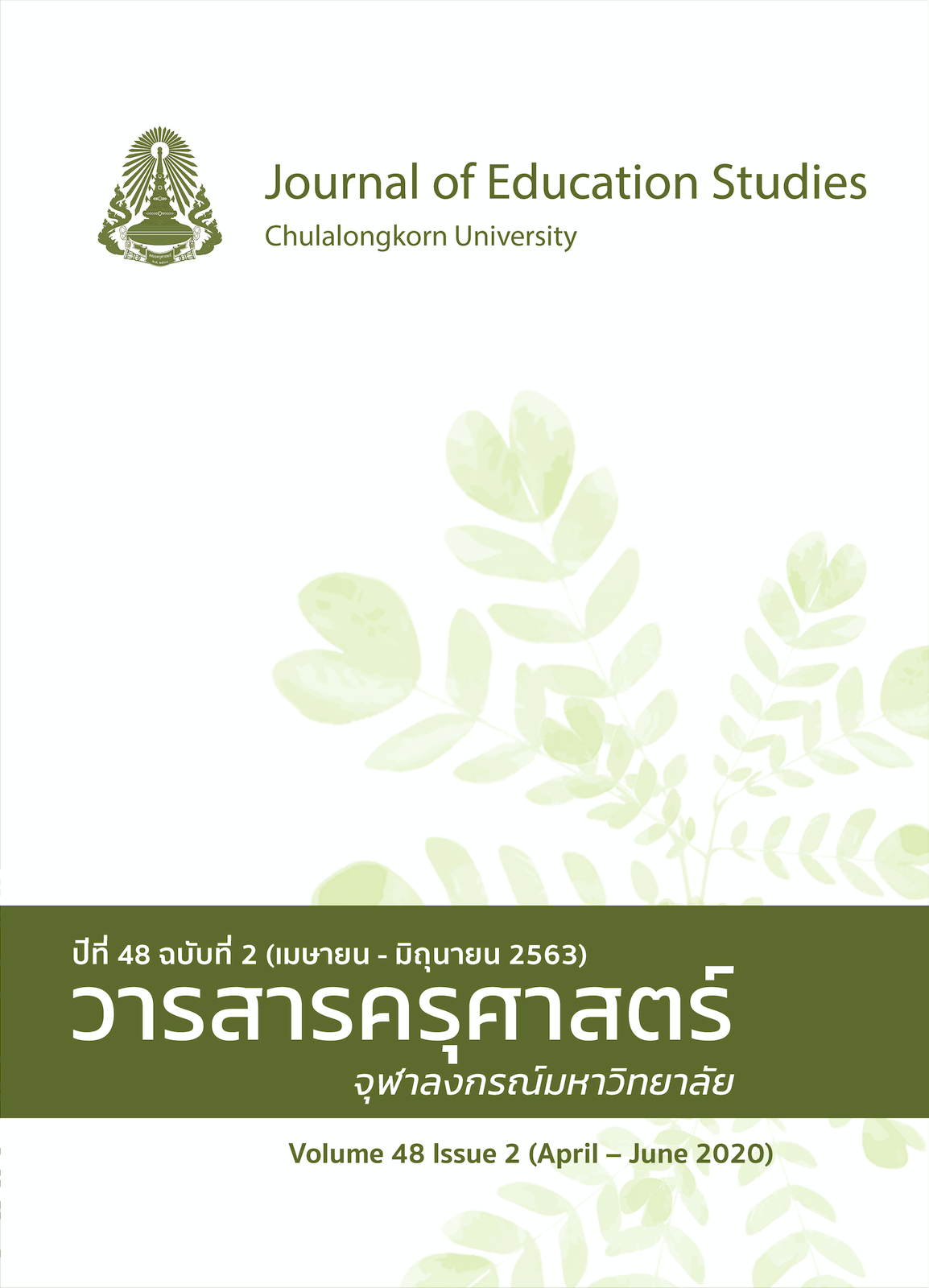A Systematic Review and Meta-analysis on the Use of Visualization to Promote Students’ Scientific Conception
Keywords:
systematic review, meta-analysis, visualization, scientific conceptionAbstract
This research aims to systematically review and meta-analyze the effect of visualization in teaching on conceptual development in science. Visualization is the representation of an abstract concept in a tangible way through a variety of modes to help us make a connection between three levels of presentation: macro, sub-micro and symbolic. Fourteen research articles from high-quality academic journals in science education indexed in Quartile 1 to 3 of SCimago database were retrieved. The effect size and the standard error of each study was calculated and estimated for the pooled effect, prediction interval, and heterogeneity using R program. The results indicate that the pooled effect was 0.78, which means that the overall effect of visualization in science teaching on the development of scientific conception was at a moderate level. There were nine studies having effect sizes higher than the pooled effect size. Of which, the studies with very high effect sizes shared notable characteristics. The visualizations used representations could well depict the phenomenon of interest at each and across all levels through an interactive, manipulative, and virtual environments such as augmented reality or virtual lab.
References
จุฬารัตน์ ธรรมประทีป. (2559). การพัฒนาความรู้ในเนื้อหาผนวกวิธีสอนและเทคโนโลยีในการสอนวิทยาศาสตร์. วารสารวิจัยและพัฒนาหลักสูตร, 6(2), 1-13.
ชาตรี ฝ่ายคำตา. (2551). แนวคิดทางเลือกของนักเรียนในรายวิชาเคมี. วารสารศึกษาศาสตร์ มหาวิทยาลัยสงขลานครินทร์ วิทยาเขตปัตตานี, 19(2), 11-28.
นินนาท์ จันทร์สูรย์ และนวศิษฏ์ รักษ์บำรุง. (2561). ความรู้เนื้อหาผสานวิธีสอนและเทคโนโลยีในห้องเรียนเคมี โดยใช้สถานการณ์จำลองแบบมีปฏิสัมพันธ์ของ PhET. วารสารวิทยาศาสตร์และวิทยาศาสตร์ศึกษา, 1(1), 109-121.
ศศิเทพ ปิติพรเทพิน, สุรเดช ศรีทา, กฤษณา โภคพันธ์ และกฤษณา ชินสิญจน์. 2555. การส่งเสริมความเข้าใจแนวคิดวิทยาศาสตร์ เรื่อง การแบ่งเซลล์ของ นักเรียนชั้นมัธยมศึกษาปีที่ 4 โดยการสร้างภาพเคลื่อนไหว. วารสารวิจัยมหาวิทยาลัยขอนแก่น, 2(1), 115-130.
สำนักงานคณะกรรมการการศึกษาขั้นพื้นฐาน. (2560). ตัวชี้วัดและสาระแกนกลางกลุ่มสาระเรียนรู้วิทยาศาสตร์ (ฉบับปรับปรุง พ.ศ. 2560) ตามหลักสูตรการศึกษาขั้นพื้นฐาน พุทธศักราช 2551. ชุมนุมสหกรณ์การเกษตรแห่งประเทศไทย.
สมศักดิ์ เสนาใหญ่. (2560, 11 มิถุนายน). ทฤษฎีจลน์ของแก๊ส (Kinetic theory of gases). คลังความรู้ SciMath. https://www.scimath.org/lesson-physics/item/7233-kinetic-theory-of-gases
เอกรัตน์ ทานาค. (2561). การนำความรู้เกี่ยวกับการใช้เทคโนโลยีผนวกการสอนในเนื้อหาวิชาเฉพาะไปใช้ปฏิบัติการสอนในห้องเรียนของนิสิตครูวิทยาศาสตร์ในหลักสูตรผลิตครู 2 ปี. วารสารวิจัยทางการศึกษา คณะศึกษาศาสตร์ มหาวิทยาลัยศรีนครินทรวิโรฒ, 13(2), 207-220.
ภาษาอังกฤษ
Akpınar, E. (2014). The use of interactive computer animations based on POE as a presentation tool in primary science teaching. Journal of Science Education and Technology, 23(4), 527-537.
Al-Balushi, S. M., Al-Musawi, A. S., Ambusaidi, A. K., & Al-Hajri, F. H. (2017). The effectiveness of interacting with scientific animations in chemistry using mobile devices on grade 12 students’ spatial ability and scientific reasoning skills. Journal of Science Education and Technology, 26(1), 70-81
Barak, M., & Dori, Y. J. (2011). Science education in primary schools: Is an animation worth a thousand pictures? Journal of Science Education and Technology, 20(5), 608-602.
Chao, J., Chiu, J. L., DeJaegher, C. J., & Pan, E. A. (2016). Sensor-augmented virtual labs: Using physical interactions with science simulations to promote understanding of gas behavior. Journal of Science Education and Technology, 25(1), 16-33.
Dervić, D., Glamočić, D. S., Gazibegović-Busuladžić, A., & Mešić, V. (2018). Teaching physics with simulations: Teacher-centered versus student-centered approaches. Journal of Baltic Science Education, 17(2), 288-299.
Ge, Y. P., Unsworth, L., & Wang, K. H. (2017). The effects of explicit visual cues in reading biological diagrams. International Journal of Science Education, 39(5), 605-626.
Gillbert, J. K. (2005). Visualization in science education. Springer.
Herga, N. R., Čagran, B., & Dinevski, D. (2016). Virtual laboratory in the role of dynamic visualisation for better understanding of chemistry in primary school. Eurasia Journal of Mathematics, Science & Technology Education, 12(3), 593-608.
Herga, N. R., Glažar, S. A., & Dinevski, D. (2015). Dynamic visualization in the virtual laboratory enhances the fundamental understanding of chemical concepts. Journal of Baltic Science Education, 14(3), 351-364.
Howell, M. E., Booth, C. S., Sikich, S. M., Helikar, T., Roston, R. L., Couch, B. A., and van Dijk, K. (2019). Student understanding of DNA structure–function relationships improves from using 3D learning modules with dynamic 3D printed models. Biochemistry and Molecular Biology Education, 47(3), 303-317
Hung, V., & Fung, D. (2017). The effectiveness of hybrid dynamic visualisation in learning genetics in a Hong Kong secondary school. Research in Science & Technological Education, 35(3), 308-329.
Kocakaya, F., & Gönen, S. (2014). Influence of computer-assisted roundhouse diagrams on high school 9th grade students' understanding the subjects of “force and motion”. Science Education International, 25(3), 283-311.
Liou, W. K., Bhagat, K. K., & Chang, C. Y. (2016). Beyond the flipped classroom: A highly interactive cloud-classroom (HIC) embedded into basic materials science courses. Journal of Science Education and Technology, 25(3), 460-473.
Lipsey, M., & Wilson, D. (2001). Practical meta-analysis. Sage.
Marshall, J. A., Castillo, A. J., & Cardenas, M. B. (2015). The effect of modeling and visualization resources on student understanding of physical hydrology. Journal of Geoscience Education, 63(2), 127-139.
Osborne, R., & Freyberg, P. (1985). Learning in science. The implications of children's science. Heinemann.
Padilla, K. (2009). Visualization: Theory and practice in science education. International Journal of Science Education, 31(10), 1417-1420.
Savinainen, A., Mäkynen, A., Nieminen, P., & Viiri, J. (2017). The effect of using a visual representation tool in a teaching-learning sequence for teaching Newton’s third law. Research in Science Education, 47(1), 119-135.
Ting, Y. L., Tai, Y., Tseng, T. H., & Tsai, S. P. (2018). Innovative use of mobile video conferencing in face-to-face collaborative science learning: The case of reflection in optics. Journal of Educational Technology & Society, 21(3), 74-85.




